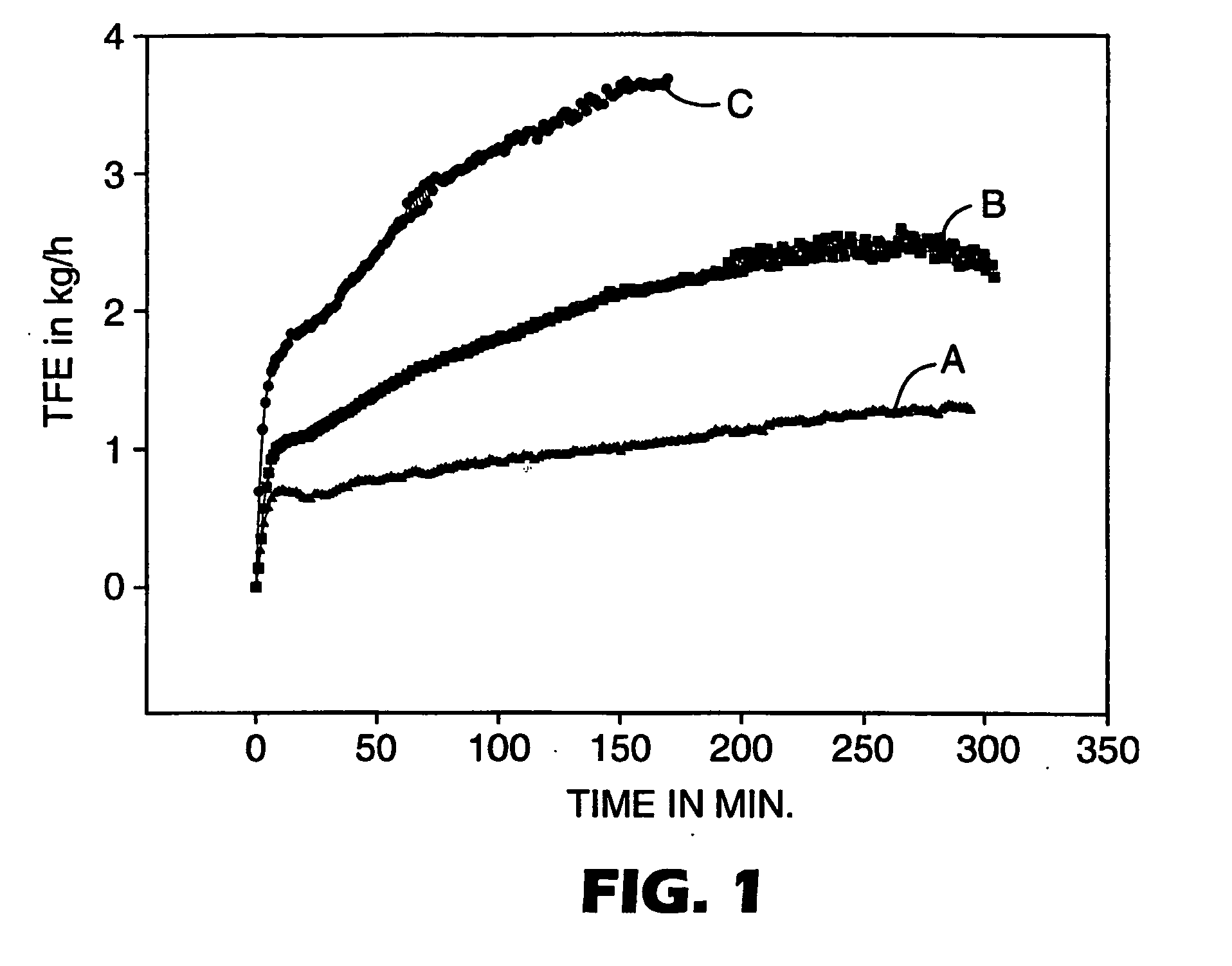Aqueous emulsion polymerization process for producing fluoropolymers
- Summary
- Abstract
- Description
- Claims
- Application Information
AI Technical Summary
Benefits of technology
Problems solved by technology
Method used
Image
Examples
example 1
[0062] The polymerization is carried out as in Comparative Example 1, but the FC 1015 used is modified with 3% by weight of FC 43 (company 3M) introduced and emulsified in the Turrax and microfluidizer. The median particle size in this mixture is 110 nm. There is a marked improvement in the FEP polymerization. A running time of 317 minutes produces 23.2% of solid, with a median particle size of 141 nm. The HFP content shows a slight rise to 11.4%, and the resultant melting point shows a slight fall to 258.degree. C.
example 2
[0063] The polymerization is carried out as in Comparative Example 1, but the FC 1015 used is modified with 30% by weight of FC 43 (company 3M) introduced and emulsified in the Turrax and microfluidizer. The median particle size in this mixture is 120 nm. There is a dramatic improvement in the FEP polymerization. A running time of 169 minutes produces 23.2% of solid, with a median particle size of 70 nm. The running time is practically halved. The HFP content shows a substantial rise to 12.5%, and the resultant melting point shows a marked fall to 250.degree. C.
example 3
[0064] The polymerization is carried out as in Comparative Example 1, but the FC 1015 used is modified with 30% by weight of FC 43 (company 3M) introduced and emulsified in the Turrax and microfluidizer, and the feed time for this mixture is increased to 40 minutes prior to introduction of the monomers under pressure. The median particle size in this mixture is 120 nm. A running time of 273 minutes produces 23.1% of solid, with a median particle size of 135 nm. The effect of the metering time becomes noticeable here in that the metering time should be selected to be as short as possible to make the best possible use of the modification. The HFP content is 11.8%, and the resultant melting point is 256.degree. C.
PUM
| Property | Measurement | Unit |
|---|---|---|
| Percent by mass | aaaaa | aaaaa |
| Percent by mass | aaaaa | aaaaa |
| Percent by mass | aaaaa | aaaaa |
Abstract
Description
Claims
Application Information
 Login to View More
Login to View More - R&D
- Intellectual Property
- Life Sciences
- Materials
- Tech Scout
- Unparalleled Data Quality
- Higher Quality Content
- 60% Fewer Hallucinations
Browse by: Latest US Patents, China's latest patents, Technical Efficacy Thesaurus, Application Domain, Technology Topic, Popular Technical Reports.
© 2025 PatSnap. All rights reserved.Legal|Privacy policy|Modern Slavery Act Transparency Statement|Sitemap|About US| Contact US: help@patsnap.com

